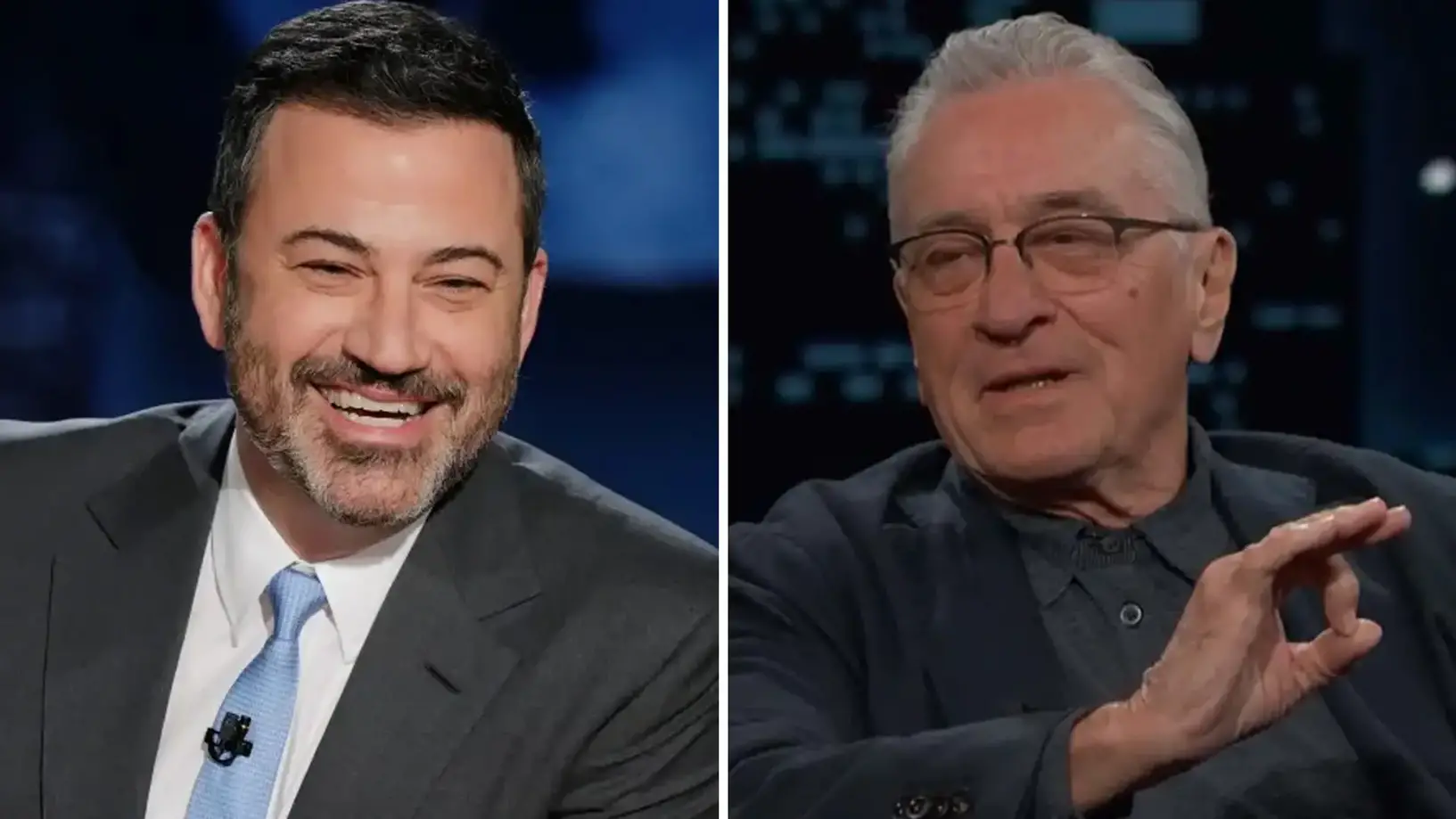In an unexpected turn of events that has the entertainment industry buzzing, “Jimmy Kimmel Live!” has hit a new low in terms of viewership. The show’s recent episode featuring Robert De Niro, the acclaimed actor known for his sharp wit and equally sharp tongue, has reportedly received the lowest rating in television history for a late-night talk show. This revelation has sparked a whirlwind of analysis, speculation, and debate about the factors leading to this unprecedented dip and what it signifies for the future of late-night television.
The episode in question saw De Niro in fine form, delivering candid insights, humorous anecdotes, and his unfiltered opinions on a variety of subjects, including politics. De Niro, never one to shy away from expressing his viewpoints, engaged in a lively exchange with host Jimmy Kimmel, touching on everything from his illustrious career to the current political climate.

Despite the promise of such a heavyweight guest, the episode’s ratings plummeted, leaving many to ponder the cause of this disconnect between the anticipated appeal of a star like De Niro and the actual viewer turnout.
Several factors have been posited in the attempt to understand the ratings slump. Some have suggested that the content of the episode, particularly De Niro’s political commentary, may have alienated a segment of the show’s viewership. In an era where political polarization is at an all-time high, celebrities’ political opinions can sometimes result in backlash from the public, leading to a decline in viewership for shows that feature such discussions.
Others argue that the drop in ratings could be attributed to broader trends in media consumption. With the rise of streaming platforms and on-demand content, traditional television ratings have been on a steady decline across the board. In this context, the low ratings for “Jimmy Kimmel Live!” might reflect not just the specifics of the episode with De Niro but a larger shift in how and when people choose to engage with late-night talk shows.
The historically low ratings for “Jimmy Kimmel Live!” have ignited a conversation about the future of late-night television. Hosts and producers are increasingly faced with the challenge of balancing entertaining and engaging content with the potential divisiveness of political discourse. The incident has prompted some to call for a reevaluation of the role of late-night talk shows in a changing media landscape, suggesting that these programs may need to adapt to maintain relevance and viewership.
This ratings dip also raises questions about the selection of guests and the nature of the discussions on late-night talk shows. As platforms that have traditionally mixed entertainment with topical commentary, finding the right balance to appeal to a broad audience without diluting the show’s essence is a growing challenge.
The episode of “Jimmy Kimmel Live!” featuring Robert De Niro may well serve as a case study for late-night television’s future. It underscores the importance of understanding audience expectations and the impact of external factors on viewership. As the industry continues to evolve, so too must the strategies for engaging audiences.
In the aftermath of this ratings slump, there’s potential for late-night shows to innovate, experimenting with formats, topics, and guest selections to recapture audience interest. Whether through incorporating more diverse viewpoints, leveraging social media and online platforms for broader engagement, or reimagining the late-night format altogether, there are numerous avenues for rejuvenation and growth.
The unprecedented low ratings for “Jimmy Kimmel Live!” after the episode with Robert De Niro have highlighted the complexities of producing late-night television in today’s media environment. While the decline can be attributed to a variety of factors, it also presents an opportunity for introspection and innovation within the genre.
As late-night talk shows navigate the challenges of political polarization, changing viewer habits, and the proliferation of digital media, their ability to adapt and evolve will be critical. The future of late-night television may be uncertain, but it is also ripe with possibilities for those willing to explore new ways of engaging and entertaining the public. In the end, the enduring appeal of late-night TV may hinge on its capacity to reflect, adapt to, and resonate with the changing world it seeks to entertain.
